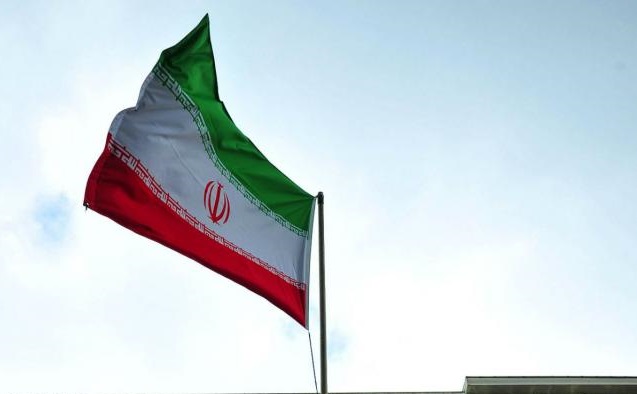Earlier this month, the daily Kayhan, reputed to reflect the views of Ayatollah Ali Khamenei, the “Supreme Guide” of the Islamic Republic, published an essay about the “containment” strategy that US President Harry S Truman adopted vis-a-vis the Soviet Union in the late 1940s.
Kayhan justified giving space to such esoteric subject by claiming that some American “think-tanks” are recommending the adoption of a similar policy towards the Islamic Republic in Tehran, among them The Woodrow Wilson Foundation and The Carnegie Foundation.
Kayhan’s claim is sustained by recent op-eds by Iran lobbyists in the US, among them former US diplomats, business brokers, and “anti-war” activists.
The Truman-era containment policy was the brainchild of George Kennan in 1946 when he was in Moscow as charge d’affaires at the US Embassy. He spelled it out in an 8,000 word report, later to be known as “the Long Telegram”, addressed to the Secretary of State.
A year later, back in Washington Kennan deepened his expose in an article signed “X”.
Thanks to the Americans’ penchant for hyperbole, the “Telegram” and the “X” article ensured Kennan’s abiding reputation as a visionary strategist, and, believe it or not, the man who prevented a Third World War.
Even today, some believe that Kennan’s idea enabled the US to “contain” the USSR, securing the broader interests of Washington and its allies.
However, a less starry-eyed reading of the facts may suggest a different picture.
To start with the very concept of “containment” is too inexact to provide a solid basis for a serious strategy. The side that seeks the containment of an adversary has no control on what that adversary might do.
The only thing that the “containing” side is certain to be able to do is to contain itself. And, that means unilaterally relinquishing all other options which will remain open to the adversary.
This is exactly what happened in US-USSR relations in the following decades.
Before “containment” became fashionable in Washington, the USSR contained itself whenever it felt it had gone too far in provoking the US. For example, in 1946, President Truman made it clear to Soviet leader Josef Stalin that he could not keep his Red Army in two Iranian provinces occupied since 1941. After a brief attempt at wiggling out, Stalin complied and withdrew his troops without firing a shot.
Another example came in the same period when Washington made it clear to Moscow that the US would not allow Soviet-backed armed Communists to seize control of Greece. Anxious not to provoke the US which, at the time, had a monopoly of nuclear weapons, Stalin also agreed to scale down support for Communist rebels in the Chinese civil war where the Americans backed the Nationalists.
In Eastern and Central Europe the USSR played with “coalition” and “popular front” gimmicks, allowing pro-West parties and personalities to retain a share of power.
Shackling the US with “containment” released the USSR from whatever constraints it had imposed on itself.
“Containment” gave the USSR freedom to pursue a hegemonic strategy.
First, it expelled “liberal” partners in Eastern and Central Europe by establishing full-blood Communist regimes run from Moscow.
Stalin also stepped up support for the Chinese Communists while recruiting, training and arming the Kim Il-sung band in the Korean Peninsula.
He also launched his “Peace Movement”, a façade for KGB-controlled Communist parties in Western Europe, the Middle East and Latin America. Within two years of the “X” article, Moscow had created 18 new Communist parties across the globe. At the same time, Moscow sponsored a series of “anti-colonial” groups in Asia and Africa, making sure that key US allies such as Britain and France would have their military bogged down in colonial struggles for years to come.
Six years after the “X” article, the Warsaw Pact was in place as cover for the Soviet war machine.
Assured by “containment” that the US would not react, Stalin formalized the annexation of the Baltic Republics and allowed Finland to survive as a semi-sovereign state thanks to “Finlandization”.
“Containment” encouraged Stalin to speed up a nuclear program which, two years after the “X” article, gave him the much-coveted atom bomb.
After Stalin’s death in March 1953 “containment” gave Moscow the assurance needed against punitive action by the US and allies- an assurance that was put to good use when the USSR crushed popular uprisings in Poland, Hungary and Czechoslovakia and created a client state in East Germany. In all those places, Soviet tanks could roll in with the certainty that the US was disarmed by its own policy of “containment.”
The true name of the metaphorical “Iron Curtain” was “containment.”
The “Long Telegram” and the “X” essay gave the Soviets a free hand in what was to be known as the Cold War. It was not until President Ronald Reagan replaced “containment” with his “roll-back” strategy that the clock started ticking for the USSR till its disintegration in 1991.
Kennan made the mistake of narrowing down options vis-a-vis the USSR to two: full-scale war or neutralizing the US with “containment.”
Knowingly or not, those who promote the idea of “containment” in the case of the Islamic Republic make the same mistake. Opportunist regimes like the defunct USSR and the Khomeinist hodge-podge in Tehran cannot be contained, especially when they claim legitimacy based on fake messianic missions.
The USSR was an anomaly in Europe.
It had to either make the whole of the continent like itself or to become like the rest of the continent.
The Khomeinist regime is in a similar position: either it imposes its brand on the whole of the greater Middle East or become like the rest of the region where Iran is located.
In dealing with the USSR yesterday and with the Islamic Republic today options are not limited to full-scale war or illusory containment.
In both contexts “containment” is another word for preemptive surrender.
